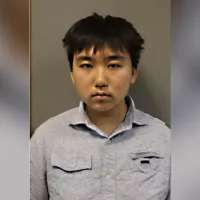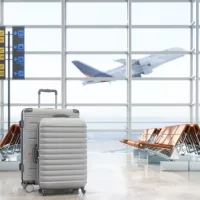
EMPPhotography/iStockBy KARMA ALLEN, ABC News
(NEW YORK) — Mississippi Gov. Tate Reeves has ordered some residents to wear masks, bowing to political pressure as COVID-19 infection rates continue to shatter records in the state which saw 1,775 new cases in a single day.
Reeves made the announcement on Tuesday as the coronavirus infection rate shot up to 23.3%, pushing the state one step closer to becoming the nation’s next COVID-19 hot spot.
Doctors administered about 1.7 tests per 1,000 people over the past week, the highest in the country, according to hospital trade publication Becker’s Hospital Review.
Reeves had previously resisted the idea of making mask use a requirement in the state, but he partly changed his mind Tuesday, when he issued an order requiring masks at public gatherings statewide for two weeks, in a push to allow schools to safely reopen. The state now ranks second in new cases per million people, behind Florida.
At least 33 states, along with Washington, D.C., and Puerto Rico, have orders in place that require people to wear face coverings in public. Health officials say it helps curb the spread of the deadly virus, but many states, including Mississippi and neighboring Tennessee, have refused to do so.
Mississippi residents still aren’t mandated to wear masks while in public, but the governor said “wearing a mask is critical” if the state wants to move forward with its plan to reopen schools.
“We have got to be prepared to change — this is what we are doing for the initial reopening of our schools,” Reeves said Tuesday. “We have to balance the very real risk of the virus and the lifelong damage from school closures.”
State crisis by the numbers
The Mississippi State Department of Health reported 956 new cases and 21 new deaths Wednesday. The state reported as many as 1,775 new infections in a day last week.
As of Wednesday, the state had at least 64,400 cases, more than double what it had last month (30,900).
State officials are also investigating a large ongoing outbreak within the state’s legislative body.
Last month, about 870 people were hospitalized with COVID-19 in Mississippi, compared to nearly 1,120 on Tuesday. Even worse, the state reported 52 new deaths on July 31, a record high and nearly three times as much as the number of new daily deaths reported a month ago, according to state data.
With many school districts returning to school this week, the governor noted that older students might be more likely to get infected and spread the virus. Because of that, he ordered eight “hot spots” to delay reopening schools for grades seven to 12. Experts say that while research is ongoing about children and COVID-19, limited scientific studies indicate that older children are more likely to transmit the virus than younger children.
Dr. LouAnn Woodward, vice chancellor of the University of Mississippi Medical Center, confirmed on Wednesday that the hospital is lacking 14 ICU beds because there’s been so many COVID-19 patients in need of intensive care. She said those patients are still being treated as ICU patients, but in other parts of the hospital.
The hospital is on track to lose between $60 million and $100 million for the fiscal year, Woodward said, citing the ongoing pandemic.
Protecting the state’s most vulnerable
Several health experts have sounded the alarm on Mississippi as well as neighboring Alabama, saying particular counties could be on track to become new U.S. hot spots based on their population demographics.
Mississippi has a large Black population with high poverty levels. Poor and underprivileged populations, especially those of color, are particularly vulnerable to suffering from the novel coronavirus due to their lower access to quality care.
Black people made up about 50% of COVID-19 cases and deaths in the state, with Black women being the majority.
As of Monday, Black women accounted for nearly 13,300 of Mississippi’s infections, with white women making up about 8,100, according to state data. Black men, on the other hand, accounted for about 7,860 of overall infections, compared to 6,848 for white men.
Dr. Olubukola Nafiu, director of pediatric anesthesia research at Michigan State University, said people color, especially those living in poverty, are more likely to experience lower quality of care. That makes them more prone to experience complications when battling illnesses like the novel coronavirus, he said.
“In the past, many medical professionals have explained that African Americans tend to be sicker than their white peers, in general, but that’s not always true,” Nafiu told ABC News. “I believe if we targeted preventive measures towards the most vulnerable populations, then we will have a substantial effect on reducing mortality rates, across the board, within the African American population.”
Overall, more than 19 million people across the globe have been diagnosed with COVID-19, according to data compiled by the Center for Systems Science and Engineering at Johns Hopkins University. The actual numbers are believed to be much higher due to testing shortages, many unreported cases and suspicions that some national governments are hiding or downplaying the scope of their outbreaks. America has become the worst-affected country, with more than 4.8 million diagnosed cases and at least 160,104 deaths.
COVID-19 legislation
Medical experts have pointed to the number of legislative failures when explaining the trends behind the increase in infections.
The first is when states fail to reimplement social distancing restrictions or statewide mask mandates, according to researchers with Boston University who called the lack of restrictions in states like Mississippi concerning among public health experts.
Reeves has now implemented mask orders for hot spot counties — including Boliver, Coahoma, Forrest, George, Hines, Panola, Sunflower and Washington — and urged residents to avoid large social gatherings. He also warned that he might close down bars statewide if the virus continues to surge.
“There are a handful of counties that certainly reach that threshold of being hot spots,” Reeves said Tuesday. “For this standard, we are mandating a delay [opening schools] in counties with more than an absolute number of 200 cases and 500 per 100,000 residents in the last two weeks. We must pump the brakes in hardest hit areas.”
His administration pushed forward with opening schools this month, but school districts have already reported that students tested positive for the coronavirus upon returning to in-person classes. Medical experts said they expect that will continue to be the case if there is no strict public guidance.
So far, the main guidance has been for residents to avoid large gatherings and only leave home for work, school or other essential activities.
“Don’t go to funerals, don’t go to weddings, don’t have large gatherings at your house with 30 to 40 people to cook out,” Reeves said. “Only do what you have to do — go to work and go to school if your school chooses.”
When asked how he plans to keep students safe while returning to school, the governor said: “In my opinion, the best way to accomplish that is to provide guidelines by local school leaders to tailor them and step in with the authority of state movement if and when and where it is absolutely necessary.”
Copyright © 2020, ABC Audio. All rights reserved.















